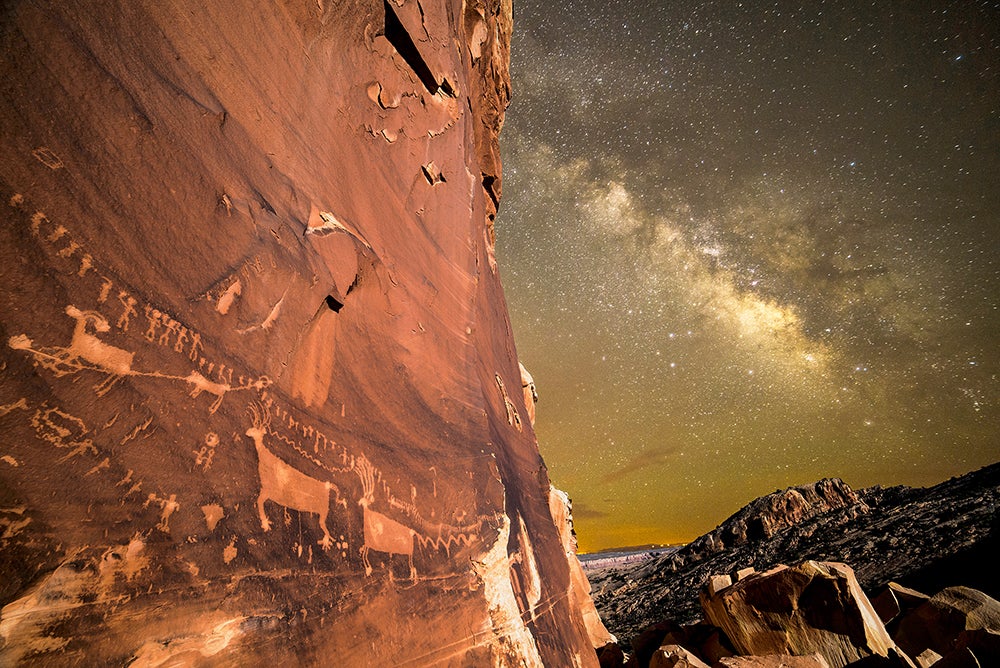Earthjustice goes to court for our planet.
We’re here because the earth needs a good lawyer.
Judge Throws Out Lawsuits Attacking Two Priceless National Monuments
This page was published 2 years ago. Find the latest on Earthjustice’s work.
A federal judge has dismissed a pair of lawsuits led by the state of Utah that sought to eviscerate two national monuments.
The lawsuits not only attacked Bears Ears and Grand Staircase-Escalante national monuments, but also challenged the Antiquities Act, the bedrock law that protects some of the nation’s most vulnerable and sacred places.
Earthjustice stepped in alongside Tribes and other conservation groups to defend the monuments against the legal challenge. This win advances two goals at the heart of Earthjustice’s mission: protecting public lands and facing down the destructive threat of fossil fuels and mining.
How’d We Get Here?
- In 2017, former President Donald Trump shrank the size of Bears Ears National Monument by 85% and that of Grand Staircase-Escalante by 45%.
- Without federal protections, looting and vandalism was common in the Bears Ears area: Centuries-old objects left by the area’s Indigenous inhabitants were stolen, ancient rock art was vandalized, and pottery was destroyed. Destruction by off-road vehicles and mining proposals threatened the Grand Staircase-Escalante National Monument as well.
- To defend these monuments, Earthjustice worked with a coalition of clients and partners to challenge the Trump administration’s rollbacks in court. Fortunately, President Biden restored the monumentsin 2021.
Utah’s Folly
- Nearly a year later, the state of Utah, along with mining interests and an off-road vehicle group, attacked the monuments in court.
- Not only did the state seek to shrink the monuments, it also attacked the Antiquities Act itself, a 117-year-old bedrock law that both Republican and Democratic presidents have used to protect some of America’s most beloved places.
- Earthjustice and conservation groups intervened in the lawsuits to defend President Biden’s reinstatement of protections for Bears Ears and Grand Staircase-Escalante. The Hopi Tribe, Navajo Nation, Ute Mountain Ute Tribe, and the Pueblo of Zuni also intervened.
Why It Matters
- The importance to Native tribes of the land protected as Bears Ears National Monument can hardly be overstated. A partnership between the Hopi, Navajo, Ute Indian Tribe, Ute Mountain Ute, and Zuni governments led the efforts to achieve Bears Ears’ designation as a national monument.
- Without protection, both Bears Ears and Grand Staircase-Escalante would be vulnerable to fossil fuel and uranium companies who would destroy the land and to looters who would pick it clean of artifacts and despoil sacred sites.
- Monuments protected by the federal government encompass some of the most beloved and unique pieces of the American landscape. Grand Staircase-Escalante, for one, is known as “Dinosaur Shangri-La” for its rich reserve of precious fossils found nowhere else in the world.
- Many public lands originally protected as monuments (including spots such as the Grand Canyon, Olympic, Zion, Acadia, and Grand Teton) later become national parks.
The President’s Power to Protect Monuments Is Upheld
- In the ruling, District Judge David Nuffer emphasized that the Antiquities Act gives the president broad authority to designate national monuments and that the court could not second guess that judgment.
- Presidents have used the Antiquities Act for more than a century to protect landscapes of extraordinary cultural, scientific, and ecological value. Just days ago, President Biden designated nearly a million acres in the Grand Canyon region as a national monument, preserving it from uranium mining and other industrial threats. (Learn more about Earthjustice’s role in protecting this area from mining.)
- To date, no court has been willing to review, much less reverse, the designation of a national monument.
- Earthjustice will continue to defend majestic places and the laws necessary to preserve them. Learn more about Earthjustice’s work to protect public lands and waters.

Originally published on March 20, 2023. Updated to reflect the dismissal of the lawsuits seeking to shrink the monuments.